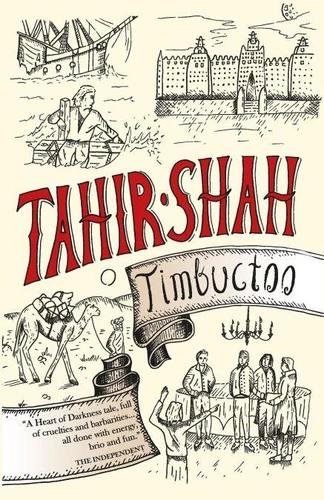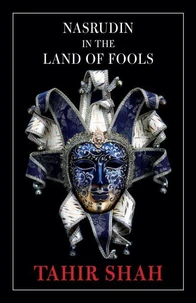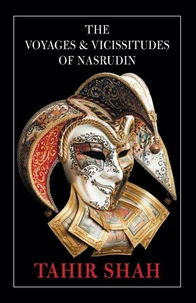Timbuctoo
Par :Formats :
Disponible dans votre compte client Decitre ou Furet du Nord dès validation de votre commande. Le format ePub est :
- Compatible avec une lecture sur My Vivlio (smartphone, tablette, ordinateur)
- Compatible avec une lecture sur liseuses Vivlio
- Pour les liseuses autres que Vivlio, vous devez utiliser le logiciel Adobe Digital Edition. Non compatible avec la lecture sur les liseuses Kindle, Remarkable et Sony
 , qui est-ce ?
, qui est-ce ?Notre partenaire de plateforme de lecture numérique où vous retrouverez l'ensemble de vos ebooks gratuitement
Pour en savoir plus sur nos ebooks, consultez notre aide en ligne ici
- FormatePub
- ISBN978-1-915876-36-2
- EAN9781915876362
- Date de parution04/08/2023
- Protection num.pas de protection
- Infos supplémentairesepub
- ÉditeurSecretum Mundi Publishing Ltd
Résumé
Inspired by a true story: In October 1815, an illiterate American sailor named Robert Adams was discovered roaming the streets of London, half-naked and starving. In the months that followed, high society was rocked by his tale. At a time when the European powers were posturing for empire, there was one quest above all else, one destination to which no Christian had ever ventured and returned alive - Timbuctoo. Regarded as a golden metropolis par excellence, an African El Dorado fashioned from the purest gold, it was for centuries a European obsession.
The British, Germans, French, and others dispatched their most capable explorers to seek it out and to sack it. Most of them never returned. The only nation uninterested in the mania for Timbuctoo was the fledgling United States. And so, when a young American sailor claimed to have visited the city as a guest of its king, while a white slave in Africa, it caused uproar on an unknown scale. More shocking still was the sailor's description of the El Dorado - as a poverty-stricken and wretched place - and the fact that he seemed blasé and uninterested at having been there at all. Set against a backdrop of the British Regency, a time of ultimate decadence and avarice, of haves and have-nots, Robert Adams's tale has been all but forgotten, until now.
An astonishing story of survival and hardship, it's a one touched with irony. A man who had set out to make his fame and fortune through trade, Robert Adams gained both, but by selling the tale of his journey. Almost twenty years ago, Tahir Shah noticed an inch-thick quarto-sized book propping up a water pipe in the basement of the London Library. Pulling it out, he first set eyes on Robert Adams's Narrative, published by John Murray in 1816. The book became an obsession to Shah, just as Regency London was itself fixated with the golden metropolis of Timbuctoo.
Packed with well-researched detail of the time, and inspired by Adams's ordeal, Timbuctoo is a fast-past and compelling read. It's a tale of treachery, greed, love and, above all else, of survival in the face of insurmountable odds.
The British, Germans, French, and others dispatched their most capable explorers to seek it out and to sack it. Most of them never returned. The only nation uninterested in the mania for Timbuctoo was the fledgling United States. And so, when a young American sailor claimed to have visited the city as a guest of its king, while a white slave in Africa, it caused uproar on an unknown scale. More shocking still was the sailor's description of the El Dorado - as a poverty-stricken and wretched place - and the fact that he seemed blasé and uninterested at having been there at all. Set against a backdrop of the British Regency, a time of ultimate decadence and avarice, of haves and have-nots, Robert Adams's tale has been all but forgotten, until now.
An astonishing story of survival and hardship, it's a one touched with irony. A man who had set out to make his fame and fortune through trade, Robert Adams gained both, but by selling the tale of his journey. Almost twenty years ago, Tahir Shah noticed an inch-thick quarto-sized book propping up a water pipe in the basement of the London Library. Pulling it out, he first set eyes on Robert Adams's Narrative, published by John Murray in 1816. The book became an obsession to Shah, just as Regency London was itself fixated with the golden metropolis of Timbuctoo.
Packed with well-researched detail of the time, and inspired by Adams's ordeal, Timbuctoo is a fast-past and compelling read. It's a tale of treachery, greed, love and, above all else, of survival in the face of insurmountable odds.
Inspired by a true story: In October 1815, an illiterate American sailor named Robert Adams was discovered roaming the streets of London, half-naked and starving. In the months that followed, high society was rocked by his tale. At a time when the European powers were posturing for empire, there was one quest above all else, one destination to which no Christian had ever ventured and returned alive - Timbuctoo. Regarded as a golden metropolis par excellence, an African El Dorado fashioned from the purest gold, it was for centuries a European obsession.
The British, Germans, French, and others dispatched their most capable explorers to seek it out and to sack it. Most of them never returned. The only nation uninterested in the mania for Timbuctoo was the fledgling United States. And so, when a young American sailor claimed to have visited the city as a guest of its king, while a white slave in Africa, it caused uproar on an unknown scale. More shocking still was the sailor's description of the El Dorado - as a poverty-stricken and wretched place - and the fact that he seemed blasé and uninterested at having been there at all. Set against a backdrop of the British Regency, a time of ultimate decadence and avarice, of haves and have-nots, Robert Adams's tale has been all but forgotten, until now.
An astonishing story of survival and hardship, it's a one touched with irony. A man who had set out to make his fame and fortune through trade, Robert Adams gained both, but by selling the tale of his journey. Almost twenty years ago, Tahir Shah noticed an inch-thick quarto-sized book propping up a water pipe in the basement of the London Library. Pulling it out, he first set eyes on Robert Adams's Narrative, published by John Murray in 1816. The book became an obsession to Shah, just as Regency London was itself fixated with the golden metropolis of Timbuctoo.
Packed with well-researched detail of the time, and inspired by Adams's ordeal, Timbuctoo is a fast-past and compelling read. It's a tale of treachery, greed, love and, above all else, of survival in the face of insurmountable odds.
The British, Germans, French, and others dispatched their most capable explorers to seek it out and to sack it. Most of them never returned. The only nation uninterested in the mania for Timbuctoo was the fledgling United States. And so, when a young American sailor claimed to have visited the city as a guest of its king, while a white slave in Africa, it caused uproar on an unknown scale. More shocking still was the sailor's description of the El Dorado - as a poverty-stricken and wretched place - and the fact that he seemed blasé and uninterested at having been there at all. Set against a backdrop of the British Regency, a time of ultimate decadence and avarice, of haves and have-nots, Robert Adams's tale has been all but forgotten, until now.
An astonishing story of survival and hardship, it's a one touched with irony. A man who had set out to make his fame and fortune through trade, Robert Adams gained both, but by selling the tale of his journey. Almost twenty years ago, Tahir Shah noticed an inch-thick quarto-sized book propping up a water pipe in the basement of the London Library. Pulling it out, he first set eyes on Robert Adams's Narrative, published by John Murray in 1816. The book became an obsession to Shah, just as Regency London was itself fixated with the golden metropolis of Timbuctoo.
Packed with well-researched detail of the time, and inspired by Adams's ordeal, Timbuctoo is a fast-past and compelling read. It's a tale of treachery, greed, love and, above all else, of survival in the face of insurmountable odds.






















